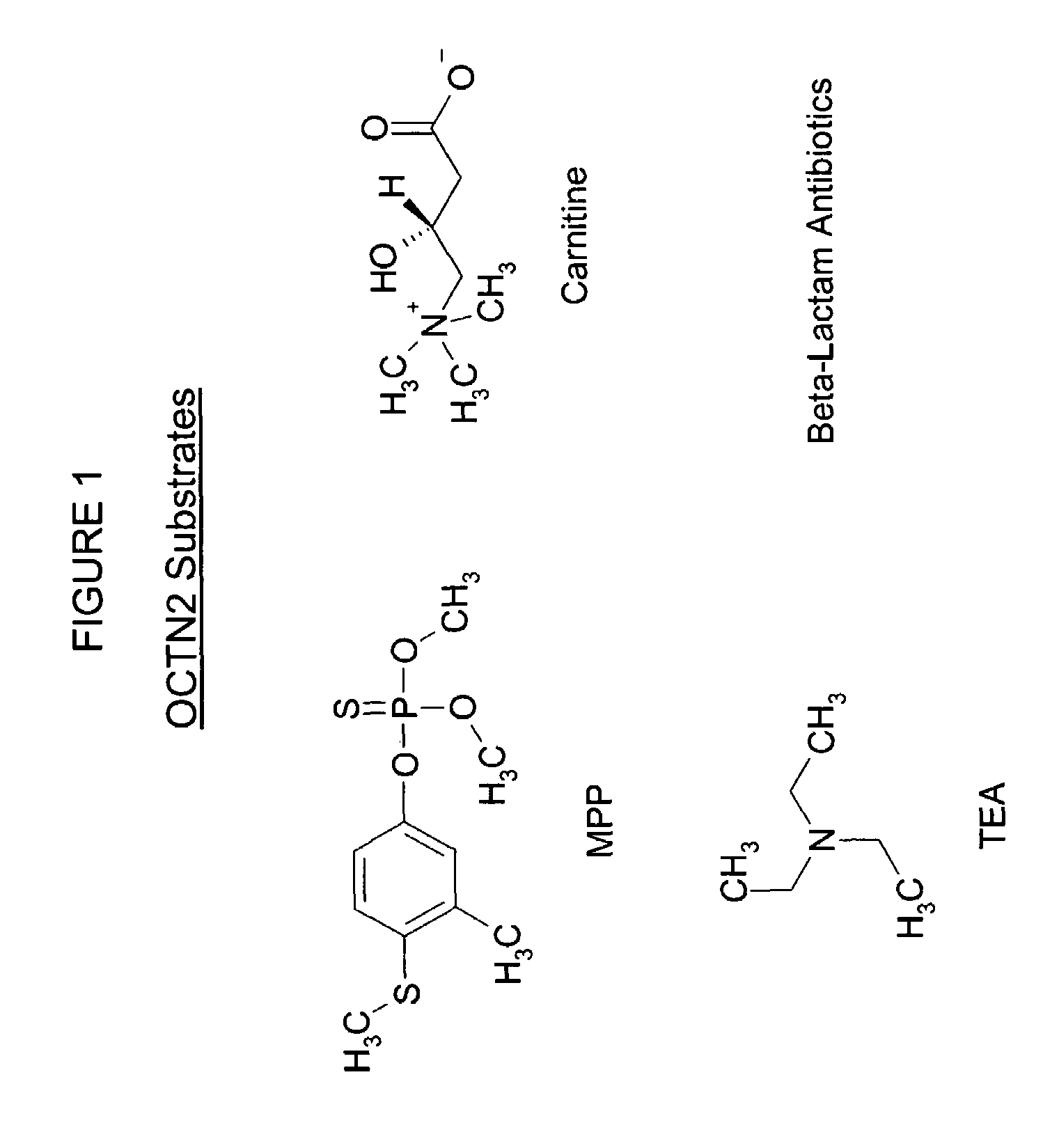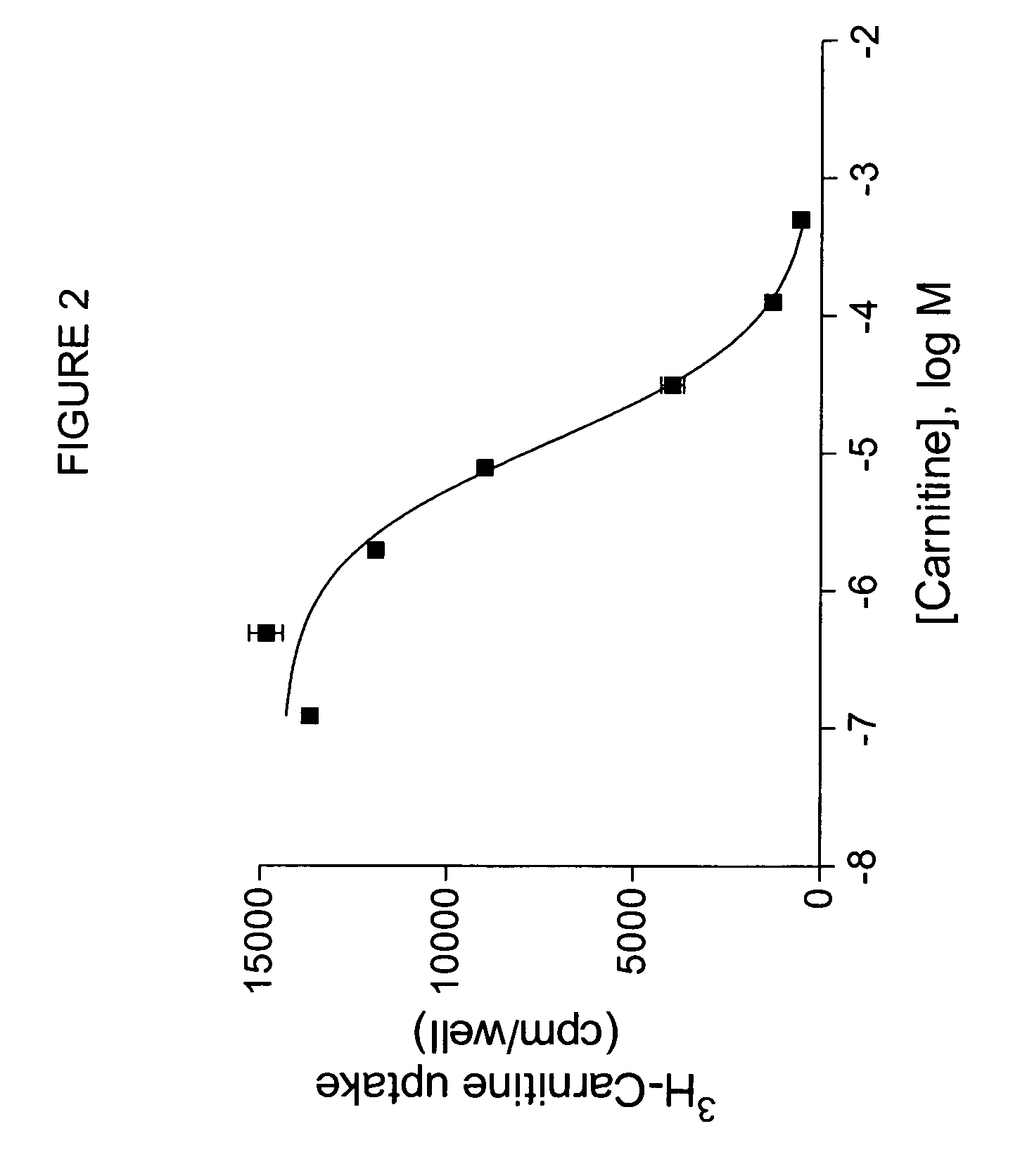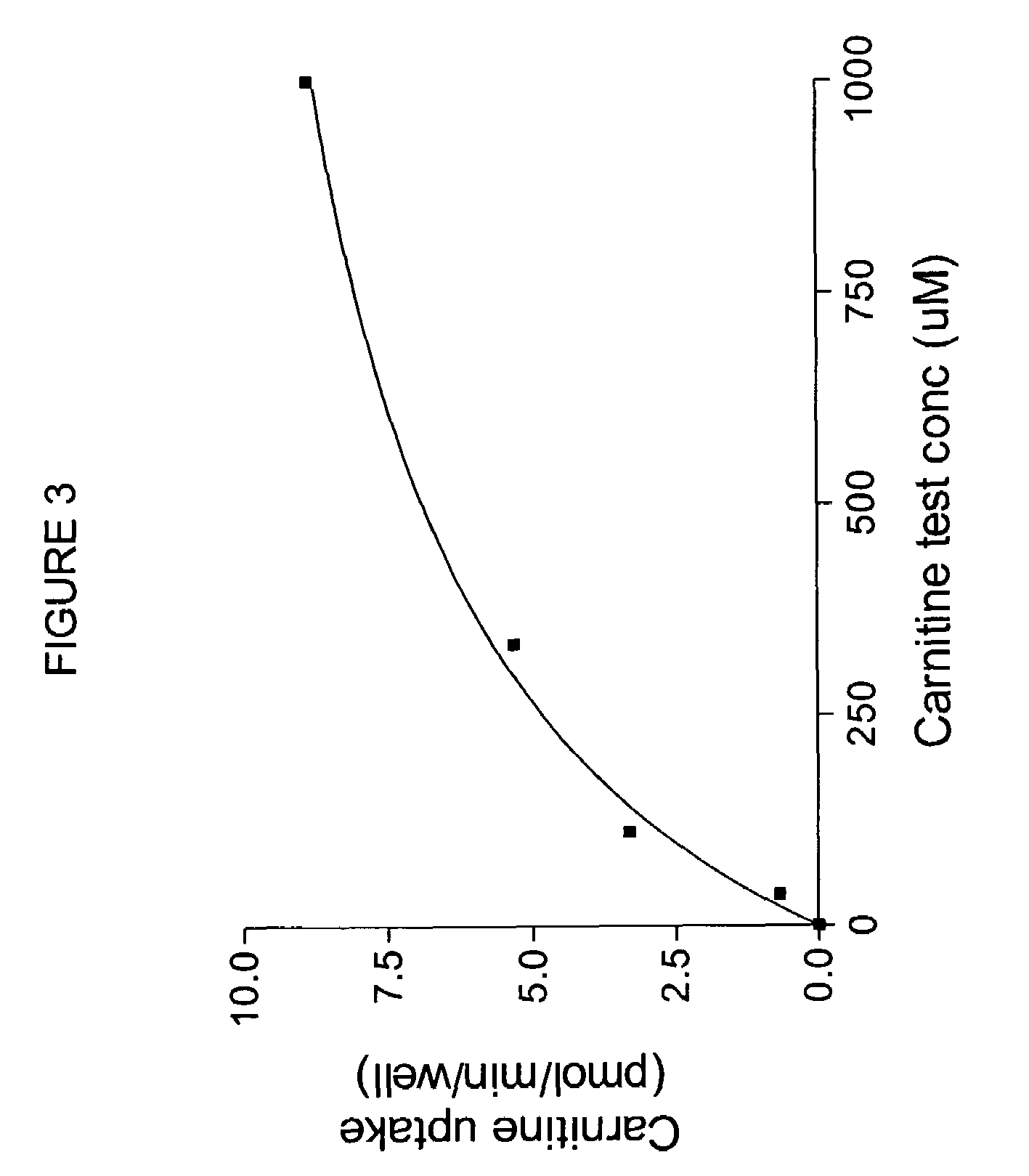Screening of compounds for OCTN2 transporter activity
a technology of octn2 and transporter activity, applied in the field of assays, can solve the problems of uncontrolled neural activity, inability to function properly, and inability to selective transport, and achieve the effects of reducing efflux substrate activity, improving retention, and increasing the ratio of substrate activity
- Summary
- Abstract
- Description
- Claims
- Application Information
AI Technical Summary
Benefits of technology
Problems solved by technology
Method used
Image
Examples
example 1
Quantitative PCR Detection of OCTN2 Expression in Brain Endothelial Cells
[0099]Quantitative PCR was performed to analyze OCTN2 expression in human brain endothelial cells. Human brain tissue was obtained from epileptic foci surgically removed from human patients. Human brain microvessel endothelial cells were isolated as follows. The brain tissue was washed in 70% ethanol, and placed in sterile phosphate buffered saline. Meninges and surface vessels were removed. Cortical gray matter was minced, placed in preparation medium (1 g / L glucose, 25 mM HEPES, 100 U / ml penicillin, 100 μg / ml streptomycin, 10 μg / ml DNAse I, 1 mg / ml collagenase / dispase, in DMEM, adjusted to a pH of 7.4) and incubated for 1 hour at 37° C. Samples were centrifuged for 10 minutes at 1000×g. Fat, cell debris, and myelin were discarded. The pellet was resuspended in fresh preparation medium and incubated for an additional 3 hours at 37° C. in a shaking bath. Medium was filtered through a 230 μM nylon sieve followed...
example 2
Studies of Cloned OCTN2 Transporters: Oocyte Expression
[0109]To assess transport function of a specific transporter protein, it is preferable to clone the cDNA and express the protein in cells that have low endogenous transport activity. Human OCTN2 is cloned by PCR, fully sequenced, and subcloned into plasmids that can be used for expression in mammalian cells or Xenopus oocytes. For expression in Xenopus oocytes, in vitro OCTN2 cRNA is prepared and injected into defoliculated oocytes.
[0110]Oocytes expressing OCTN2 protein exhibit higher levels of 3H-carnitine uptake than noninjected controls, as shown in FIG. 2. To measure directly the uptake of possible substrates, an oocyte uptake assay is performed in which uptake of compounds is measured by mass spectroscopy. For example, uptake of carnitine can be measured. Oocytes injected with OCTN2 cRNA are incubated at 16-18° C. until maximal transporter expression is reached. Oocytes from the same batch, not injected with cRNA, can be us...
example 3
Studies of Cloned OCTN2 Transporters: OCTN2 Transport Currents in Oocytes
[0112]The OCTN2 protein couples transport of carnitine to the sodium gradient by co-transporting one sodium ion for each substrate molecule. Thus, there is a net flux of positive charge into the cells during OCTN2 transport. This net charge movement is measured as current using two-electrode voltage clamping in oocytes expressing OCTN2.
[0113]The membrane potential of oocytes is held at 60 mV and current traces were acquired using PowerLab software (ADInstruments). Full 7-concentration dose-responses are performed for the test compound. Current responses at the highest concentration are normalized to the maximal carnitine concentration (2 mM). Half-maximal concentrations are calculated using non-linear regression curve fitting software (Prism) with the Hill co-efficient fixed to 1. To ensure that currents are specific for the over-expressed transporter, all compounds are tested against uninjected oocytes. Since ...
PUM
 Login to View More
Login to View More Abstract
Description
Claims
Application Information
 Login to View More
Login to View More - R&D
- Intellectual Property
- Life Sciences
- Materials
- Tech Scout
- Unparalleled Data Quality
- Higher Quality Content
- 60% Fewer Hallucinations
Browse by: Latest US Patents, China's latest patents, Technical Efficacy Thesaurus, Application Domain, Technology Topic, Popular Technical Reports.
© 2025 PatSnap. All rights reserved.Legal|Privacy policy|Modern Slavery Act Transparency Statement|Sitemap|About US| Contact US: help@patsnap.com



